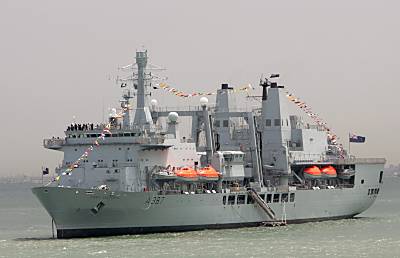RAF reservists from squadrons across the country have taken part in a major exercise on Salisbury Plain.
 |
| RAF Merlins on Salisbury Plain during Exercise Chiltern Kite [Picture: Squadron Leader Dylan Eklund, Crown Copyright/MOD 2012 Source: Ministry of Defence, UK Click to enlarge |
Exercise Chiltern Kite, which ran between 13–15 April, was one of the largest Royal Auxiliary Air Force (RAuxAF) exercises in recent years.
“We’ve brought together more than half of the squadrons from across the UK to participate in a demonstration of our contingent capability,” said Squadron Leader Gary Lane, Officer Commanding 606 (Chiltern) Squadron.
“Whilst it’s recognised that these Reserves will not deploy together as a force, the realism of the scenario here has replicated the mobilisation experiences they undergo when they are individual augmentees.”
Warrant Officer Bill Bailey RAuxAF, Command Warrant Officer (Reserves), added:
“We have lots of squadrons with different expertise, and by bringing them together we are able to replicate what they will experience on operations.”
Within hours of arrival of the lead force elements, a large forward operating base was established in a fictitious overseas state. Out beyond the wire, RAF Regiment gunners drawn from four squadrons operated as one to provide security for the main force, which included a number of regular RAF units.
“Chiltern Kite would not have been possible without the support of the Puma and Merlins of RAF Benson, the fuelling assets from Tactical Support Wing and 1 Police Squadron who have conducted trade training in the field for reserve policemen,” said Sqn Ldr Lane.
For helicopter crews the opportunity to practice missions used on operations to gain and retain currency in a variety of techniques was eagerly taken. This included tactical flying, carrying underslung loads and moving troops.
One of the largest contingents came from 4626 Aeromedical Evacuation Squadron based at RAF Lyneham whose 50 personnel included a Doctor, nurses, paramedics and physiotherapist worked in a tented Aeromedical Support Unit.
“This is essentially a deployed A+E [Accident and Emergency] capability,” said Wing Commander Colin Mathieson. “The training we’re getting is basically testing the training we’ve done this year through a series of medical scenarios. We also have four personnel deployed with the RAF Regiment in the battlefield medic role.”
And the scenario was intense:
“The amount of training injects here in 48 hours the equivalent to a week at Bastion,” continued Wg Cdr Mathieson. “But it’s not just the clinical training; it’s using the clinical skills they’ve already got in a field scenario.”
In a nearby building air movements personnel from 4624 (County of Oxford) Squadron, based at RAF Brize Norton, made preparations for the potential evacuation of ex-patriots and embassy staff via a passenger handing facility.
“The benefit for us is to work on an forward operating base at short notice and to live in a field environment,” said WO Matt Dillon.
“We are used to working in large main operating bases such as Camp Bastion and being here in very basic conditions means we have to improvise and think on our feet.”
Based at RAF Henlow, 3 Police Squadron work closely on operations with their regular counterparts at 1 Police Squadron:
“The exercise has been a unique opportunity for our police trainees to undertake their final environmental training in the field,” said Sqn Ldr Bev Peart, Chief of Staff 3 Police Wing (3 PW).
“We usually do this on the airfield at RAF Henlow so to get out into the field in a realistic scenario with many other units and capabilities can only enhance the training we deliver. We’re used this on 3 PW as an opportunity to conduct collective training with both squadrons, Regular and Reserve, to further forge integration.”
With the exercise over, the RAuxAF units returned to their RAF Stations; personnel ready to return to work on Monday morning and answer the inevitable question from colleagues: “Do anything interesting at the weekend?”
Members of the RAuxAF undertake key functions in support of operations such as intelligence, a wide variety of medical roles, logistics, media operations and force protection. There are twenty squadrons of the RAuxAF, comprising some 1,300 personnel. These reserves operate alongside regular RAF personnel, both in the UK and when deployed on operations and are a vital part of the front line RAF.
Press release
Ministry of Defence, UK

 von
von 
